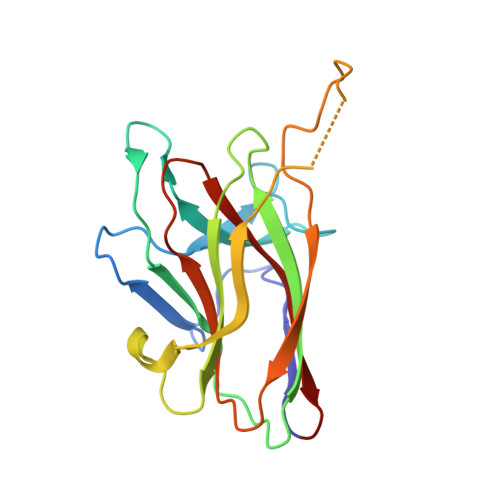The lysine gingipain adhesin domains from Porphyromonas gingivalis interact with erythrocytes and albumin: Structures correlate to function.
Ganuelas, L.A., Li, N., Yun, P., Hunter, N., Collyer, C.A.(2013) Eur J Microbiol Immunol (Bp) 3: 152-162
- PubMed: 24265933
- DOI: https://doi.org/10.1556/EuJMI.3.2013.3.2
- Primary Citation of Related Structures:
4ITC - PubMed Abstract:
The crystal structure of the K1 domain, an adhesin module of the lysine gingipain (Kgp) expressed on the cell surface by the periodontopathic anaerobic bacterium, Porphyromonas gingivalis W83, is compared to the previously determined structures of homologues K2 and K3, all three being representative members of the cleaved adhesin domain family. In the structure of K1, the conformation of the most extensive surface loop is unexpectedly perturbed, perhaps by crystal packing, and is displaced from a previously reported arginine-anchored position observed in K2 and K3. This displacement allows the loop to become free to interact with other proteins; the alternate flipped-out loop conformation is a novel mechanism for interacting with target host proteins, other bacteria, or other gingipain protein domains. Further, the K1 adhesin module, like others, is found to be haemolytic in vitro, and so, functions in erythrocyte recognition thereby contributing to the haemolytic function of Kgp. K1 was also observed to selectively bind to haem-albumin with high affinity, suggesting this domain may be involved in gingipain-mediated haem acquisition from haem-albumin. Therefore, it is most likely that all cleaved adhesin domains of Kgp contribute to the pathogenicity of P. gingivalis in more complex ways than simply mediating bacterial adherence.

















